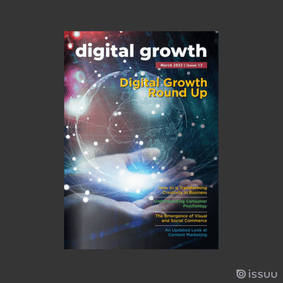If you’re looking to do business in the Middle East, there are a couple of things you need to know. Okay, a lot of things you need to know. In this article, we’ll be sharing insights on how you can begin to formulate your localization and SEO strategies - two complementary and very important factors that will help expand your business in the region.
Localization Strategy for SEO
Localization is all about ensuring your brand fits in with your audiences' cultures and customers. Instead of having broad marketing strategies, it is hyper-targeted to suit a specific segment. The goal is for it to feel like a natural fit, and for that familiarity to resonate with your audiences.
There are two key elements to this which we’ll explore below, before expanding on them through Middle Eastern applications.
Market Research
To achieve this, you need to conduct thorough and accurate market research, with the aim of pinpointing the specific interests, behaviors, language, habits, and expectations of a particular group of people. For example, in Belgium hugs are not the common way of greeting people, while in Portugal a kiss on each cheek is standard. These kinds of gestures and norms inform society and can help to ensure that your marketing team does not create any misinformed blunders that will put your target market off.
Tailoring the Website
Your website needs to have the applicable language options available. It may be simplest to offer the site in both English and the secondary language with a toggle, or if it's a global site, ask which country site the person would like the visit. Translations cannot be done poorly as this will cause confusion - be sure to use translators for this.
Now, localizing a website requires more than adjustments to the language. You need to also ensure that the content shared is not duplicated (to avoid SEO penalties) and to actually create SEO content in that language. This will help boost the site’s visibility, especially since the competition for smaller markets tends to be much smaller than with English.

Localization in the Middle East
Wedged between the Far East and West is the Middle East. It is a political term used to refer to a collective set of countries. It includes Egypt, Syria, Israel, Lebanon, Jordan, Iraq, Saudi Arabia, Kuwait, Bahrain, Qatar, Turkey, Iran, Palestine, Yemen, Oman, UAE, and Cyprus. It is dynamic and multicultural, with a mixed population. There are numerous nuances for marketers to take note of in the region.
Entering into the Middle Eastern market can require patience. This is because relationship-building is crucial, and it takes time for consumers to develop brand loyalty. Despite this, it remains a highly alluring market. Whether your business is already established on this side of the world, or you’re looking to expand your global presence, you’re going to need localization as part of your SEO strategy.
To grow and succeed in the Middle East, you need to direct efforts towards connecting with audiences here. While It is a relatively small continent, there are various different countries, cultures, and customs to take into account. When you’re able to understand this and embody it, you’ll be on your way to developing strong relationships and attaining business success.
Now, localization is more than translations, but that is a crucial element. There are parts of the Middle East where English is commonly spoken (like here in Dubai), though the mother tongue of the region is Arabic. Offering Arabic versions of your website is a great way to connect with your audience. In fact, studies show that consumers are more comfortable making purchases in their home language. There are a lot of nuances that come into play here, including dialects.
Read more: Should I Translate My Website into Arabic?
SEO is key for marketers the world over, and this is especially true in the Middle East, where the number of internet users is among the world’s highest. Be sure to offer Arabic language options and to create an Arabic SEO strategy to ensure you’re promoting your website to the highest possible degree.
In addition to this, SEO efforts cannot be a copy-paste effort. It needs to go beyond translation - you need to conduct keyword research in that specific language - in this case, Arabic. The differences in the way people communicate linguistically result in different ways of doing online searches. For example - do people search for “cars,” “vehicles,” or “auto”?
Once you have your SEO in place, you need to ensure that the traffic you get translates into leads. To do this, you’ll need an effective lead generation strategy. All of the content on your site should inspire people to take the next step in their buyer’s journey with your brand, so be sure to consider and cater to the consumer experience holistically.
Most countries in the Middle East are Islamic, and therefore that needs to be understood and appreciated through branding. By being in tune with Islamic principles and ideas, you’ll be showing respect to the culture, religion, and people. This includes respect for the elders, integrity, and hospitality.
Since religion plays an important role in the way of life in the Middle East, it should inform your communication and operations, especially if you’re operating in the region. Don’t leave room for misunderstandings. It is more than a belief system - it is a way of life, an identity, and a strong link to heritage.
Many of the Gulf nations are wealthy, with high levels of disposable income among their populations. This means the luxury market is thriving, and there is an elevated expectation when it comes to branding and quality. These consumers are willing to pay premium prices for labels, excellent service, and top-tier products. To put this into a global context, these are among the world’s top spenders on luxury goods.
The Middle Eastern market consists of a large youthful population. They also value luxury goods, with status and power expressed materialistically. Accessories, fashion (designer labels), cosmetics, and beauty items thrive in this market and are expected to continue to rise.
Other things marketers should take note of include:
- Word of mouth is still crucial in the region.
- Some countries are far more open to Western influences than others.
- eCommerce is growing in the region too, though mall culture is still strong in the region.
- During Ramadan, retail sales increase
- While many of the GCC countries earned their wealth through oil trade, they are diversifying their markets which presents businesses from various industries with opportunities
- Rates of smartphone usage is higher than global averages in certain regions of the Middle East, so be sure your site is mobile-responsive
Localization is essential for increasing your reach and targeting the right market. It can help your SEO efforts and vice versa. This is especially important when marketing a brand in the Middle East - making it locally relevant and well-known will go a long way in your sales efforts.
Do you need Arabic translations? SEO recommendations? Localization tips for the Middle East? We’ve got you covered. Speak with us at Nexa, a digital marketing agency based in Dubai with all the know-how you need to succeed in the region.
%20(1).png?width=2701&height=607&name=BRC_NEXA_LOGO_BLACK%20%26%20VIOLET%20(1)%20(1).png)
%20(1).png?width=2701&height=607&name=BRC_NEXA_LOGO_WHITE%20(2)%20(1).png)


![The Cost of Social Media Marketing in Dubai, Abu Dhabi and Doha [Updated 2023]](https://blog.digitalnexa.com/hs-fs/hubfs/Copy_of_11.16.2014.png?length=100&name=Copy_of_11.16.2014.png)









Comments